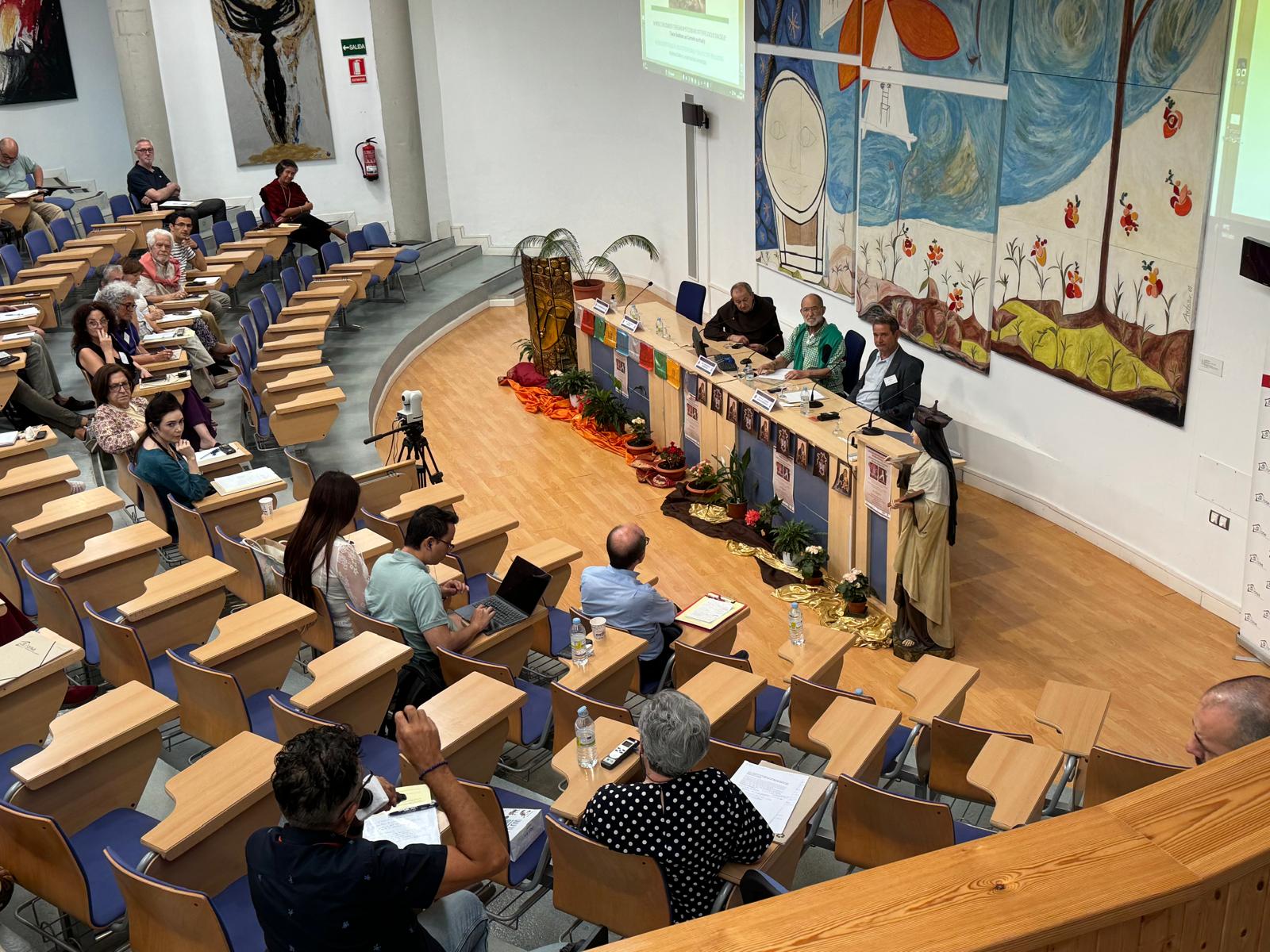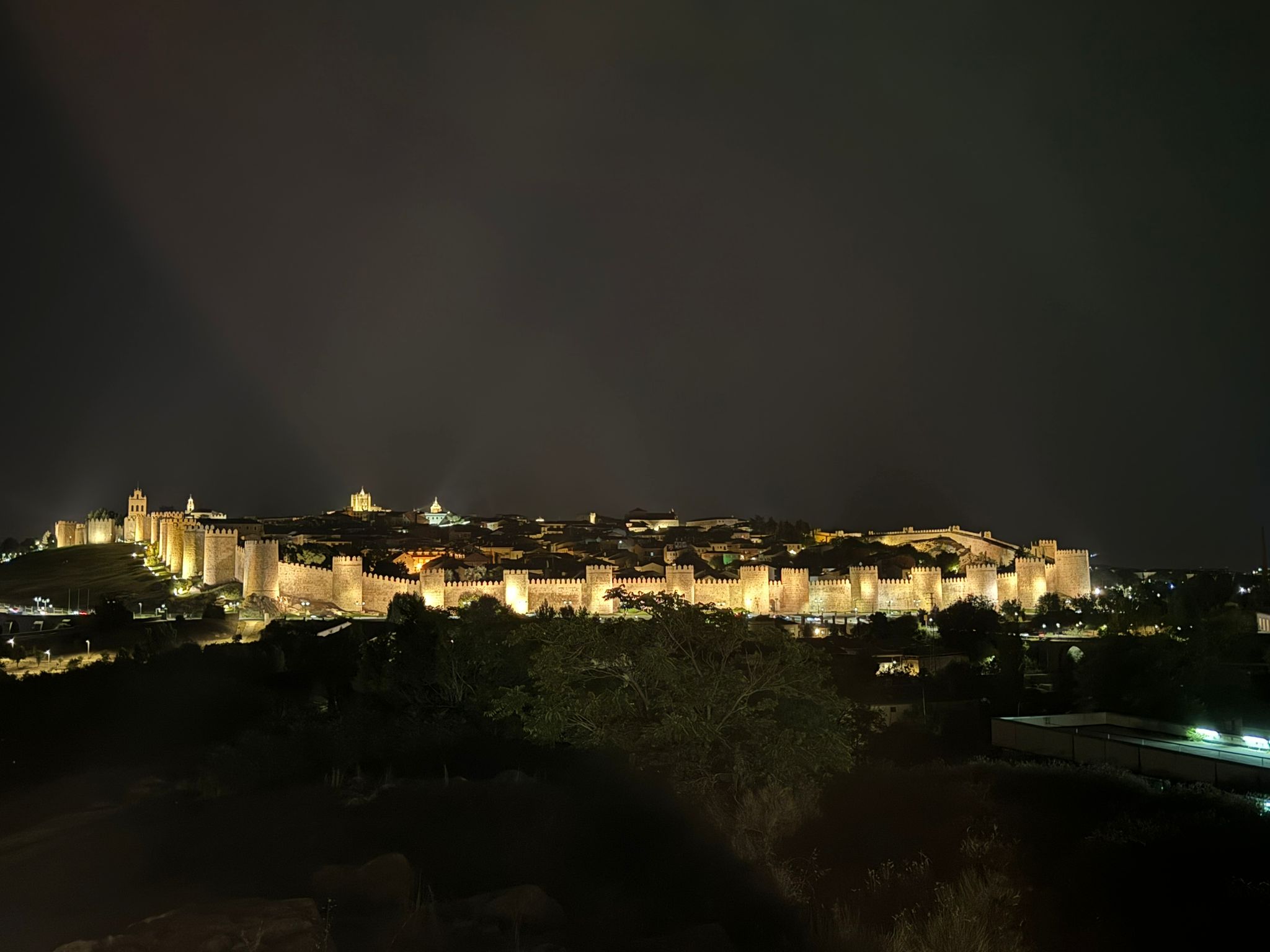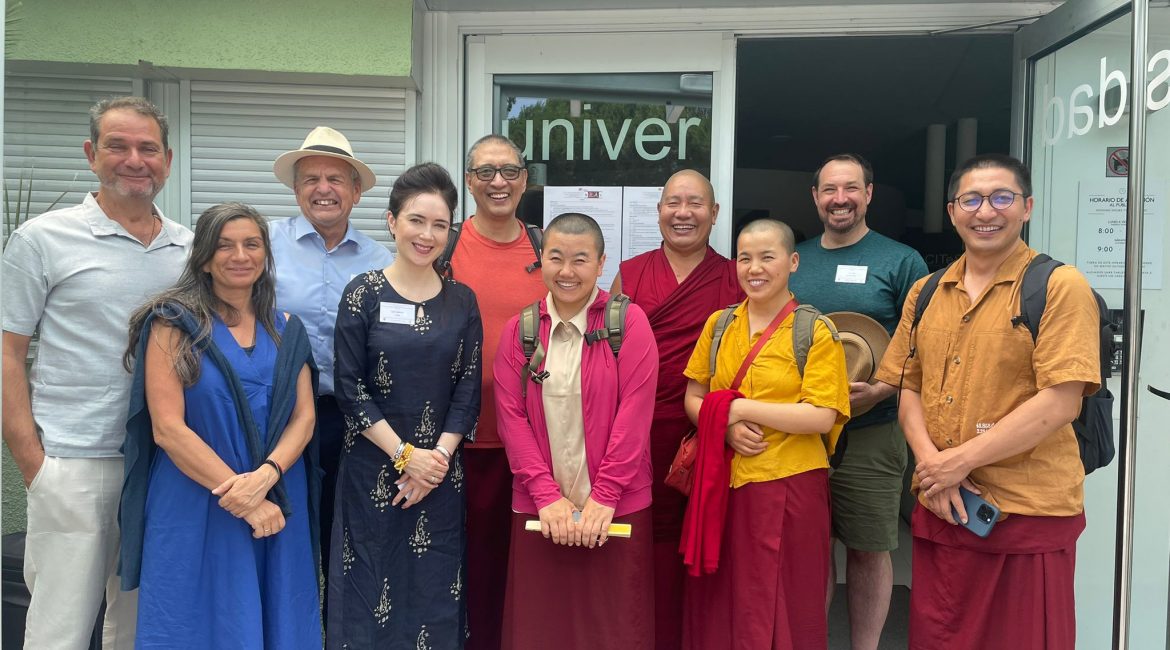The conclusion of the “3rd World Meeting Teresian Mysticsm and Interreligious Dialogue” brought to attendees an earnest attempt to grapple with aligned concepts in the Carmelite tradition and Vajrayana Buddhism. Even if there were ultimately disagreements and discordances, the encounter itself was stressed to be a step in the right direction, toward interreligious cooperation and further ideas for future events.
Fr. Francisco Brändle OCS, prior of the Carmelite desert of Las Batuecas (Spain) offered a Carmelite interpretation of mystical visions in light of Saint Teresa’s teachings. Dr. Georgios Halkias, who represented the HKU CBS delegation as the Centre’s director, discussed some ways in which Buddhism and Catholicism could move toward a common discourse, and in so doing, authentically share comparative teachings without muddling metaphysics and ontology (which most interfaith experts agree is an impossible bridge to cross for traditions) while also saying something meaningful beyond simply sharing ethical statements.

Winners of a primarily Carmelite, Spanish-language essay competition (IV International Prize of Teresa of Jesus and Interreligious Dialogue) were announced in the afternoon, followed by a Carmelite workshop in meditation. The evening was topped off by a flamenco performance, bringing brevity to Carmelite and Buddhist monastics and scholars who assuredly enjoy a bit of fun.
The final day, the 28th, saw BDG senior correspondent Justin Whitaker host a roundtable on the comparative perspective of what constitutes “the ultimate objective,” reaching toward the full reality that is God, or emptiness, and therefore entering the kingdom of heaven or attaining Buddhahood and enlightenment. Before the roundtable, Khenpo Yeshi of UC Berkeley presented a paper on actualizing the sacred in Buddhist mysticism, while Dr. Francisco Javier Sancho Fermin (who is due to start a Master of Buddhist Studies at HKU CBS soon) offered a Carmelite perspective on what constitutes the ultimate goal of the spiritual life.
The closing of the congress, followed by a mass, concluded what was a good-spirited visit by Buddhist scholars and practitioners to the heart of Carmelite spirituality. After attending, my sincere hope is that Buddhists find some way to host our Carmelite friends in Hong Kong, a city with a heartbeat very different to Ávila’s: an Asian cosmopolitan enclave with a skyline defined by modernity, as opposed to the medieval Ávila’s walls that were built between the 11th and 14th centuries.

To be truthful, the opportunity to come to Ávila again was irresistible, and its ancient churches, delicious food (including a very nice Japanese restaurant called X), and picturesque streets lined with shops old and new, are as beautiful as when I first had the pleasure of visiting in 2017. Theravada, Zen, and Vajrayana practitioners have walked under the town’s great stone gates since. When will the Carmelites stroll under the bold and mighty skyscrapers of China’s East-West pride?
Related blog posts from BDG
The Mandala and the Mansion
Beyond mere goodwill: Keeping authenticity in interfaith dialogues in Avila


